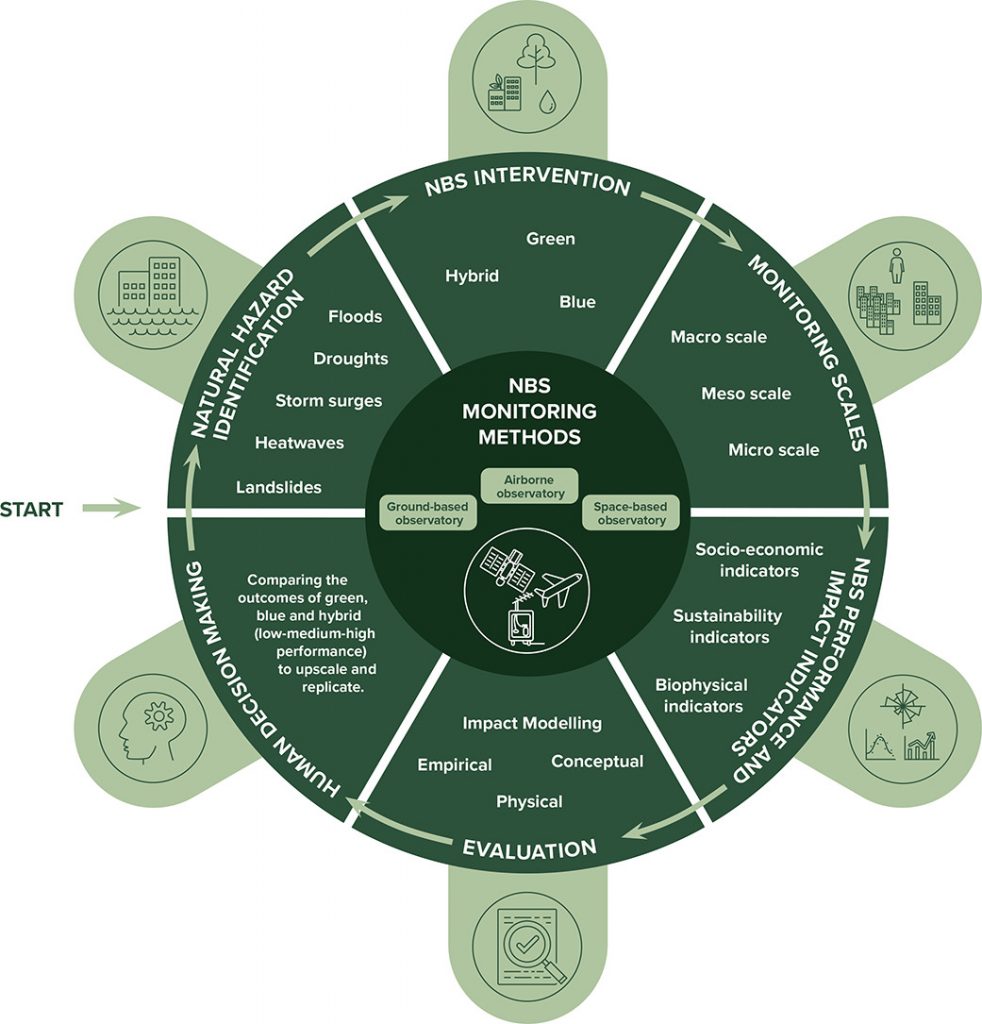To facilitate the widespread uptake of nature-based solutions (NBS) in mitigating hydro-meteorological risks (HMRs), it is required a consolidated knowledge-base related to monitoring methods, efficiency, functioning and the ecosystem services they provide.
The publication attempts to fill this knowledge gap by reviewing and compiling the existing scientific literature on methods (ground-based measurements and remote sensing observations) that are used or can be relevant to monitor the performance of NBS against five hydro-meteorological risks: floods, droughts, heatwaves, landslides, and storm surges with associated coastal erosion.
Monitoring methods can allow to map risks and impacts by specific hydro-meteorological events. The publication reveals that the selection and application of monitoring methods mostly rely on the particular NBS being monitored, resource availability (e.g. time, budget, space) and type of hydro-meteorological risk. No standalone method currently exists that can allow monitoring the performance of NBS in its broadest view. However, equipment, tools and technologies developed for other purposes, such as for ground-based measurements and atmospheric observations, can be applied to effectively monitor the performance of NBS and how they mitigate the above risks.
The publication also focuses on the capabilities of passive and active remote sensing. Advancement in airborne and satellite-based remote sensing technology has provided a robust way for the spatial and temporal comparison of NBS intervention versus its absence. This improved monitoring method can support the evaluation of existing uncertainty and scepticism in selecting NBS over the artificially built concrete structures or grey approaches. Remote sensing technical developments, however, take time to shift toward a state of operational readiness for monitoring the progress of NBS in place (e.g. green NBS growth rate, their changes and effectiveness through time).
More research is required to develop a holistic approach to continually monitor the performance of NBS over a large scale of intervention. This performance evaluation could increase the ecological and socio-economic benefits of NBS, and also create high levels of their acceptance and confidence by overcoming potential scepticism of NBS implementations.
The paper “An overview of monitoring methods for assessing the performance of nature-based solutions against natural hazards” is published in the Earth-Science Reviews, Volume 217, June 2021, 103603
Paper available HERE.

